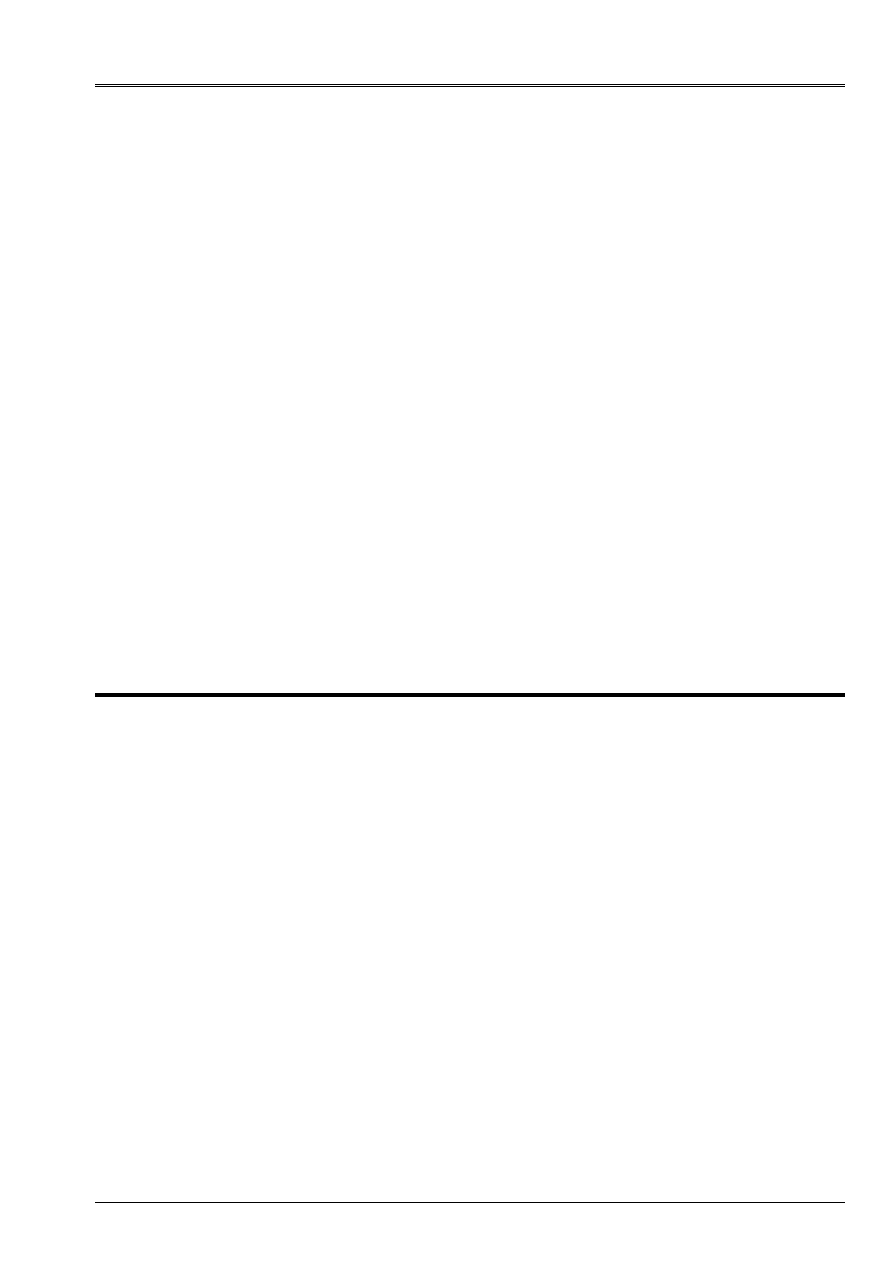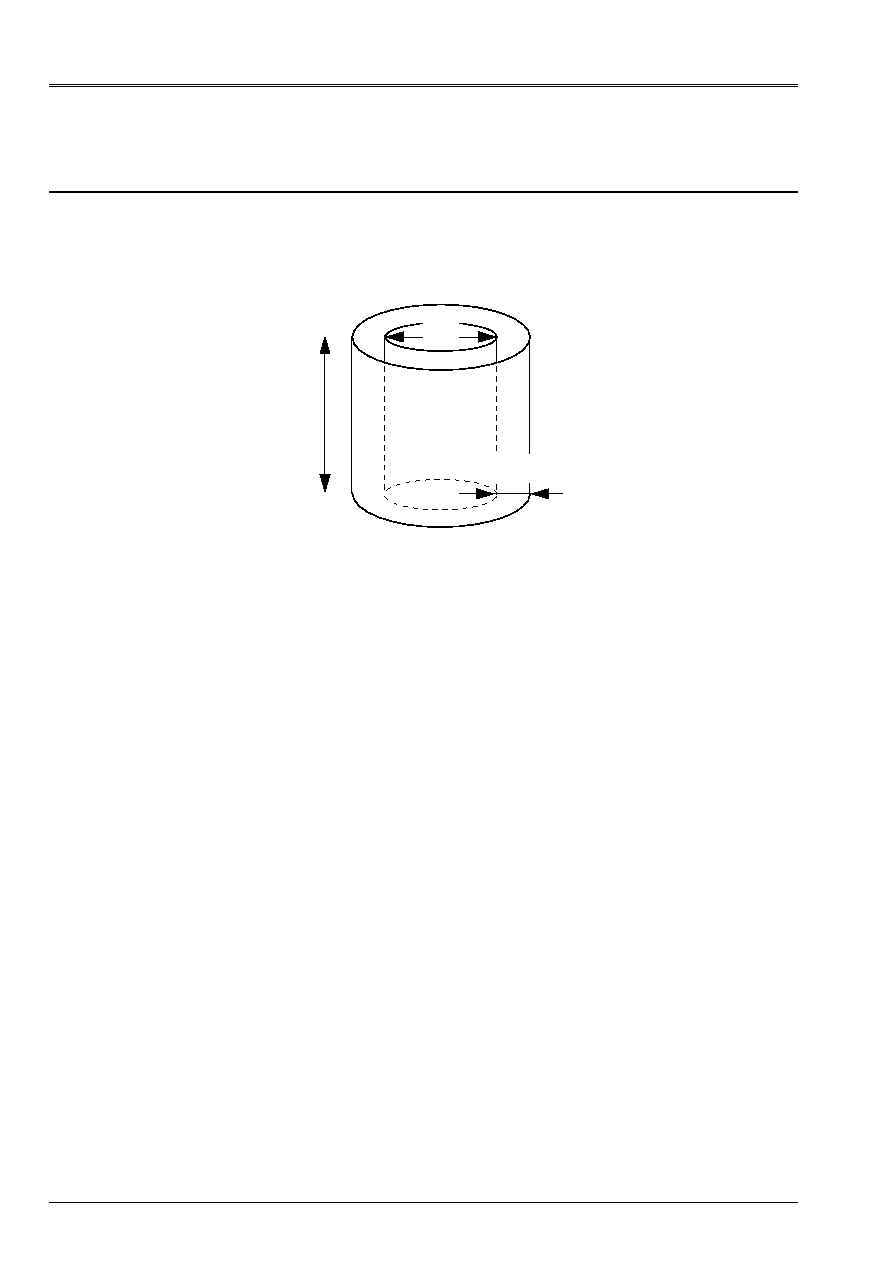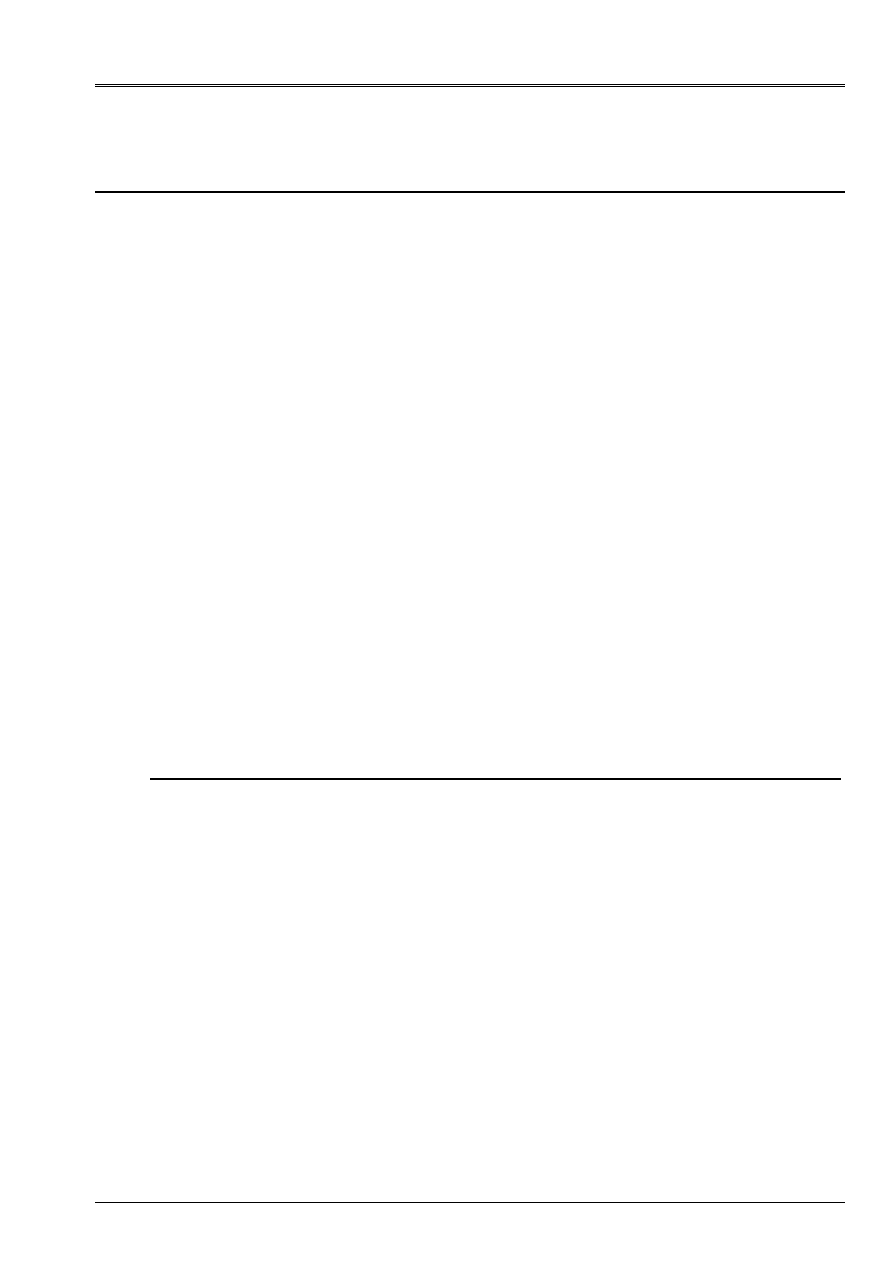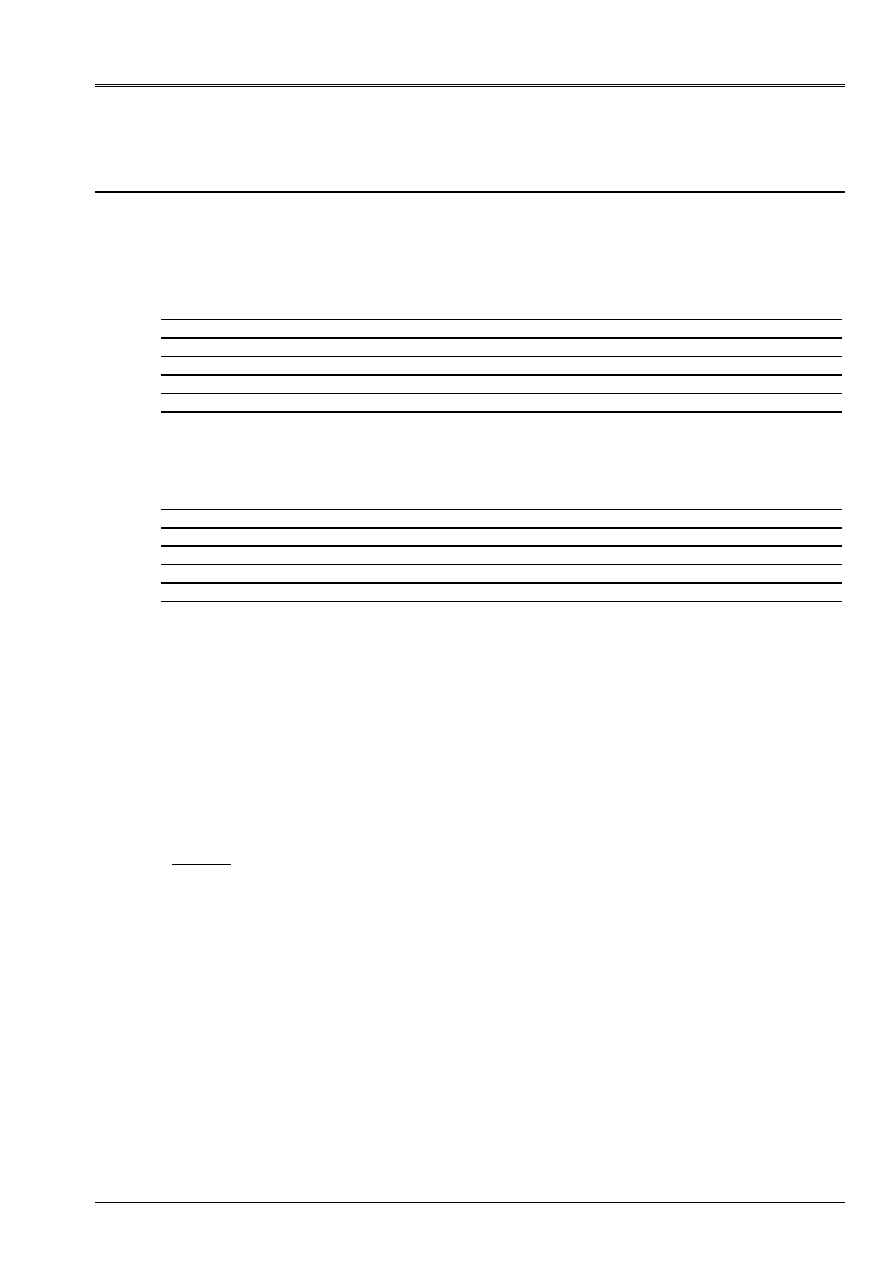
Code_Aster
®
Version
5.0
Titrate:
SDLS103 - Coaxial hulls under annular flow
Date:
09/10/01
Author (S):
A. ADOBES, Mr. LAINET
Key
:
V2.03.103-A
Page:
1/6
Manual of Validation
V2.03 booklet: Linear dynamics of the hulls and plates
HI-86/01/021/A
Organization (S):
EDF/MTI/MFTT, CS IF
Manual of Validation
V2.03 booklet: Linear dynamics of the hulls and the plates
Document: V2.03.103
SDLS103 - Coaxial hulls under flow
annular: inertial coupling between modes
Summary
One considers a hardware configuration made up of two coaxial cylindrical hulls, in interaction
with a fluid running out in annular space separating the hulls.
The goal of the case-test is to validate the model of coupling fluid-structure developed in the operator
CALC_FLUI_STRU
for this type of configuration.
One is interested here more particularly in the taking into account of the inertial coupling between modes, obtained out of water
at rest (mean velocity of flow null). The reference solution is provided by a calculation carried out with
Code_Aster implementing the operator
CALC_MATR_AJOU
.

Code_Aster
®
Version
5.0
Titrate:
SDLS103 - Coaxial hulls under annular flow
Date:
09/10/01
Author (S):
A. ADOBES, Mr. LAINET
Key
:
V2.03.103-A
Page:
2/6
Manual of Validation
V2.03 booklet: Linear dynamics of the hulls and plates
HI-86/01/021/A
1
Problem of reference
1.1 Geometry
The studied configuration consists of two 4 meters height coaxial cylindrical hulls:
2m
4m
0.1m
The internal hull has an average radius of 1 meter and a thickness of 1 centimetre.
The external hull has an average radius of 1,10 meter and a thickness of 1 centimetre.
1.2 Properties
material
The material constituting the two hulls is steel. Its physical characteristics are:
= 7800 kg/m
3
E = 2. 10
11
AP
= 0,3
1.3
Boundary conditions and loadings
The conditions of self-supporting quality are the same ones for the two hulls: partly embedded ends
lower (Z = 0) and free partly higher (Z = 4 m).

Code_Aster
®
Version
5.0
Titrate:
SDLS103 - Coaxial hulls under annular flow
Date:
09/10/01
Author (S):
A. ADOBES, Mr. LAINET
Key
:
V2.03.103-A
Page:
3/6
Manual of Validation
V2.03 booklet: Linear dynamics of the hulls and plates
HI-86/01/021/A
2
Reference solution
2.1
Method of calculation used for the reference solution
The reference solution is provided by a calculation carried out by means of Code_Aster implementing
the operator
CALC_MATR_AJOU
.
With this intention, one uses a mesh on which the elements of the structure (hulls internal are defined
and external), voluminal elements of fluid (annular space) and elements of interface
fluid-structure. This method is described completely in [bib1].
On the elements of interface, the condition normal speed limit null is imposed, translating
condition of nonpenetration of the fluid in the hulls.
On the sections of input and exit of annular space, the limiting condition of null potential is
imposed, translating the condition of null disturbed pressure at the ends.
One carries out the first modal calculation of the structure in air. The operator
CALC_MATR_AJOU
allows
then to calculate the matrix of mass added by the fluid, projected on the basis of modal
structure in air. One can then recombine this matrix of mass added with the matrix of mass
generalized of the structure in air, then to solve a new modal problem which leads to
characteristics of the water system at rest. Results obtained for the Eigen frequencies
system out of water at rest constitute the reference solution.
Characteristics of the mesh
:
17 nodes on a vertical generator
60 nodes on a crown
960 meshs QUAD4 on each hull
=> 1920 meshs for the interface fluid-structure
2880 meshs HEXA8 for the fluid field
180 meshs QUAD4 for the section of input of annular space
180 meshs QUAD4 for the section of exit of annular space
2.2
Results of reference
N°
mode
1 2 3 4 5 6 7 8 9 10 11
12
Freq
(Hz) 5,65 5,65 6,48 6,48 9,34 9,34 20,82 20,82 28,22 28,22 31,48 31,4
8
2.3
Uncertainty on the solution
In the studied case, the half-thicknesses of hull account for 10% of the dimension of the annular play.
In the calculation of reference realized by the operator
CALC_MATR_AJOU
, the half-thicknesses are
neglected for the definition of the fluid field. One thus awaits a systematic error about
5% on the frequencies, because of this approximation.
Moreover, differences of modeling and resolution between the numerical method implemented
in the operator
CALC_MATR_AJOU
and the analytical model developed in the operator
CALC_FLUI_STRU
induce an additional variation.
2.4 References
bibliographical
[1]
G. ROUSSEAU: “Schedule of conditions and principle of realization of the calculation of stiffness and
of damping added in Code_Aster ", HP-51/96/005/B.
[2]
L. PEROTIN, “Note of principle of the model
MOCCA_COQUE
“, HT-32/95/021/A.

Code_Aster
®
Version
5.0
Titrate:
SDLS103 - Coaxial hulls under annular flow
Date:
09/10/01
Author (S):
A. ADOBES, Mr. LAINET
Key
:
V2.03.103-A
Page:
4/6
Manual of Validation
V2.03 booklet: Linear dynamics of the hulls and plates
HI-86/01/021/A
3 Modeling
With
3.1
Characteristics of modeling
The geometry of the structures and the characteristics of material constituting the hulls were
presented before.
Concerning the absolute roughness of wall of the structures, one takes a value of 10
5
measure.
The surrounding fluid is water. Values taken for the density and viscosity
kinematics are respectively
F
= 1000 kg/m
3
and
F
= 10
6
m
2
/S.
One considers the flow not confined upstream and downstream from the structures.
The problem of coupling fluid-structure is solved by the analytical model
MOCCA_COQUE
[bib2]
integrated in Code_Aster (operator
CALC_FLUI_STRU
), for a mean velocity of flow
null: one thus obtains the modal characteristics of the water system at rest, by catch in
count effects of added mass.
3.2 Characteristics
mesh
Compared to the calculation of reference, the characteristics of the mesh are similar, with the difference
close the fluid field is not represented any more. In order to make the two hulls interdependent one of
the other, one adds a group of meshs connecting the nodes to the level of embedding.
One a: 17 nodes on a vertical generator,
60 nodes on a crown,
960 meshs QUAD4 on each hull,
60 meshs QUAD4 to solidarize the two hulls (bases embedded).
3.3
Stages of calculation
The definition of the characteristics of a hardware configuration made up of two hulls
cylindrical coaxial for a calculation of coupling fluid-structure is given via
the operator
DEFI_FLUI_STRU
key word factor
COQUE_COAX
.
The resolution of the coupling fluid-structure for a configuration of the type “coaxial hulls” and it
calculation of the modal parameters (reduced frequencies and depreciation) and deformed modal out of water
at rest are realized with the operator
CALC_FLUI_STRU
.
3.4 Functionalities
tested
Controls
Key word factor
Key word
DEFI_FLUI_STRU COQUE_COAX
MASS_AJOU
“YES”
CALC_FLUI_STRU BASE_MODALE
MODE_MECA

Code_Aster
®
Version
5.0
Titrate:
SDLS103 - Coaxial hulls under annular flow
Date:
09/10/01
Author (S):
A. ADOBES, Mr. LAINET
Key
:
V2.03.103-A
Page:
5/6
Manual of Validation
V2.03 booklet: Linear dynamics of the hulls and plates
HI-86/01/021/A
4
Results of modeling A
4.1 Values
tested
The comparisons relate to the water frequencies at rest of the first 12 modes of the system.
Numbers of the modes
CALC_FLUI_STRU
(H = 9cm)
CALC_MATR_AJOU
(H = 10cm)
variation
1 and 2
5,30 Hz
5,65 Hz
6,2%
3 and 4
6,12 Hz
6,48 Hz
5,5%
5 and 6
8,69 Hz
9,34 Hz
6,9%
7 and 8
21,96 Hz
20,82 Hz
5,5%
9 and 10
29,34 Hz
28,22 Hz
3,9%
11 and 12
33,75 Hz
31,48 Hz
7,2%
One gives, for information, the values of the frequencies of these modes in air:
Numbers of
modes
Hull in mvt
Command of hull
Command of beam
Frequency
1 and 2
external
3
1
25,15 Hz
3 and 4
intern
3
1
26,12 Hz
5 and 6
external
4
1
31,91 Hz
7 and 8
intern
2
1
36,85 Hz
9 and 10
intern
4
1
37,42 Hz
11 and 12
external
2
1
39,49 Hz
4.2 Remarks
The results are in conformity so that one could wait. One observes indeed:
·
a systematic error of about 5%, because of not taken into account thicknesses
of hull for the definition of the fluid field in the calculation of reference;
·
a residual variation due to the differences of modeling and resolution between the two
operators
CALC_MATR_AJOU
and
CALC_FLUI_STRU
.
Modes 1 to 6 are modes for which the structure is strongly coupled with the fluid. In
practical, these modes correspond to movements of the hulls internal and external overall in
opposition of phase. For these modes, the terms of added mass are theoretically proportional
with
F
R
H
3
, where R indicates the average radius and H the thickness of annular space.
For these the first six modes, results provided by
CALC_FLUI_STRU
lead to frequencies
clean lower than those calculated by
CALC_MATR_AJOU
. Indeed, H being weaker, them
terms of added mass are larger.
Modes 7 to 12 are modes for which the structure is slightly coupled with the fluid. In
practical, these modes correspond to movements of the hulls internal and external almost in
phase. Thus, the terms of added mass are theoretically proportional to the water mass
involved, i.e. with
F
RH
.
In this case, it is normal that the results provided by
CALC_FLUI_STRU
lead to
Eigen frequencies higher than those calculated by
CALC_MATR_AJOU
. Indeed, H being more
weak, the terms of added mass are smaller.

Code_Aster
®
Version
5.0
Titrate:
SDLS103 - Coaxial hulls under annular flow
Date:
09/10/01
Author (S):
A. ADOBES, Mr. LAINET
Key
:
V2.03.103-A
Page:
6/6
Manual of Validation
V2.03 booklet: Linear dynamics of the hulls and plates
HI-86/01/021/A
4.3 Parameters
of execution
Version: NEW 5.02.20
Machine: SGI ORIGIN 2000
Overall dimension memory: 64 Mo
Time CPU To use: 50,63 seconds
5
Summary of the results
The comparison of the water frequencies at rest calculated with the operators
CALC_FLUI_STRU
and
CALC_MATR_AJOU
is satisfactory. The variations met between these two operators are explained by
the fact that they use a different modeling.





